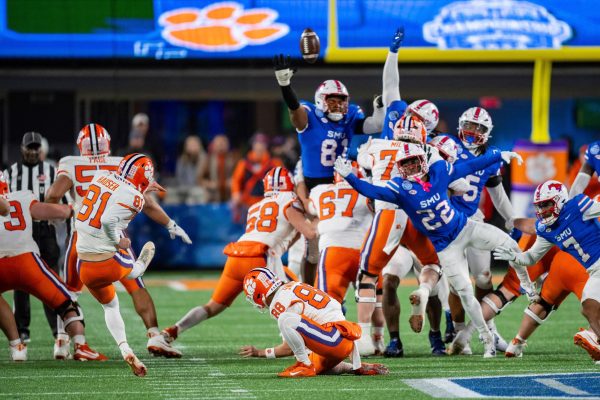The Sport of Competitive Eating
In the spirit of the season, let’s talk about eating contests. No, not elbowing your cousin away from the last slice of pumpkin pie at Thanksgiving or forcing yourself to swallow that last bite of stuffing, but real, professional competitive eating. Today’s “gurgiators” bear little resemblance to the participants of the classic pie eating contest featured in local fairs or the original contestants at the Nathan’s Hot Dog Eating Contest in 1916. Now they have official leagues, huge cash prizes, national television coverage and documented stratagems. Still, does this somewhat absurd competition really deserve the title of a sport? Absolutely it does.
The International Federation of Competitive Eating (IFOCE) is an entirely legitimate organization. Founded in 1997 by the Shea brothers, the IFOCE has thousands of members and holds over a hundred competitions each year all across the globe. Major League Eating, a recently created umbrella organization started by the IFOCE, keeps the record books, acts as a recognized brand and works to promote media attention for competitive eating. The official source of eater rankings and rules, Major League Eating gives competitive eating the infrastructure necessary to function as a sport and expand globally. But organizations, committees and rules do not make something a sport, they just make it accessible, leaving the task of establishing eating as a sport to the athletes.
The current number one eater in the IFOCE is Joey “Jaws” Chestnut who is described by the IFOCE as “an American hero and a national treasure.” Sorry Jeter, but there’s a new golden boy in the world of professional sports and he can eat 66 hot dogs (and buns) in 12 minutes. Winning rookie of the year in 2005, Joey has recently dethroned the legendary Takeru “Tsunami” Kobayashi and assumed his title of master muncher.
Like any athletes, gurgiators must keep themselves in peak physical condition, pushing their bodies to transform into streamlined machines of consumption. Chestnut maintains his world class stomach by alternating fasting and stretching his stomach through the consumption of vast amounts of milk, water and protein supplements. Although this style might work for Chestnut, each eater has their own regime. Kobayashi prepares for a gastronomic battle by eating increasing volumes of food to force his stomach capacity to expand and then exercising to prevent a buildup of fat which could impede stomach expansion during competition.
With a well-organized league of dedicated, highly-honed athletes and a fierce and expanding group of followers, what could possibly stand in the way of competitive eating achieving widespread recognition as a sport? Perhaps it is the idea that the simple act of stuffing one’s face does not qualify as an athletic endeavor.
Consider this: In playing catch, what are you really doing? You are informally practicing your skills while acknowledging that being able to toss a baseball or a football does not qualify you to go pro. Now consider eating lunch; you might see a parallel because, let’s face it, not many people could devote their lives to being gastronomic gladiators. Eating, like playing catch, is not performed at the same level by all people, although we all do it. So when refusing to acknowledge competitive eating as a sport, ask yourself this question: Can you eat 103 hamburgers in eight minutes? I didn’t think so. There is the argument that consuming food is an activity necessary to survival, not a game. However, the original purpose of sports were to train young men to be warriors, another activity critical to survival.
A sport is technically defined as “an athletic activity requiring skill or physical prowess” and “an activity that is governed by a set of rules or customs and often engaged in competitively.” By these standards, competitive eating clearly qualifies. Yes, it is like no other sport in the world and it is unlikely that the NCAA is going to incorporate it into intercollegiate competition (though, judging by some performances around campus, it could be very successful), but that should not detract from competitive eating’s reputation as a veritable, bankable athletic competition. This sport definitely loses some support because of the sheer grotesqueness of the competition and the polarity of the differences between a typical athlete and an eathalete. But instead of searching for faults in competitive eating, think instead of its potential. No longer is overeating rude; it’s training.
In this sport, informal leagues and scrimmaging opportunities abound for the casual amateur and with the current holiday season upon us there are ample chances to break out the stop watches, review the Heimlich maneuver, and celebrate this vibrant and outlandish sport.





